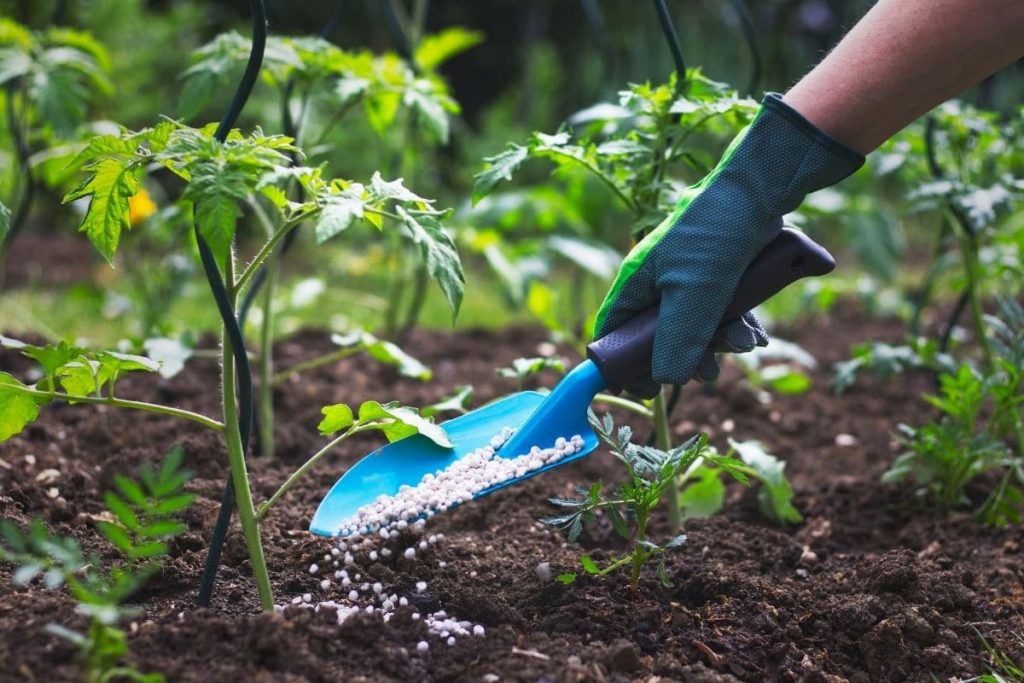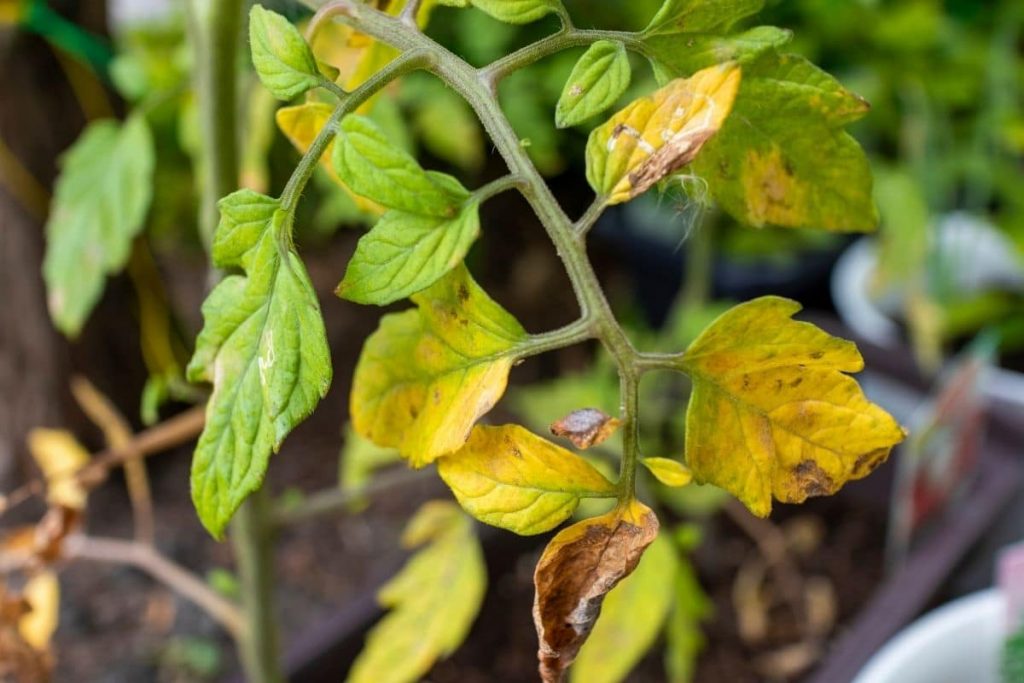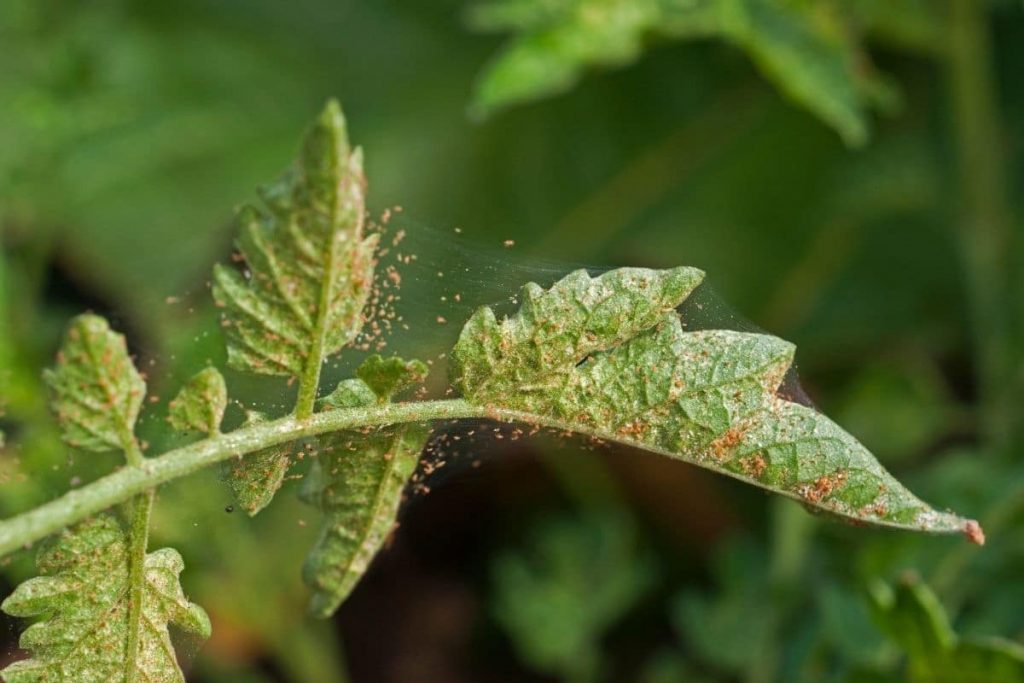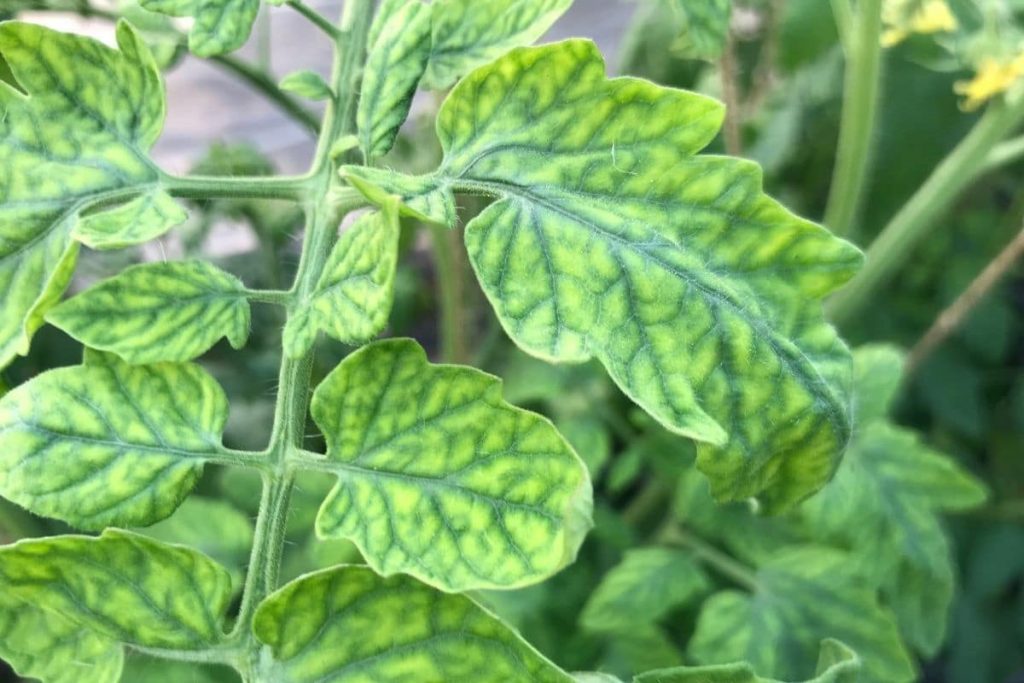Tomato leaves curling up can be a sign of various issues, but with proper care, you can often correct the problem and help your tomato plants thrive. Here are some common causes of curled tomato leaves and what to do about them:
1. Environmental Stress:
- High temperatures, excessive sunlight, or fluctuations in temperature can stress tomato plants, causing leaf curl. To help, provide shade during the hottest parts of the day, and ensure consistent watering to prevent extreme moisture fluctuations.
2. Herbicide Drift:
- Herbicides used nearby can drift onto your tomato plants, causing leaf curl. Prevent drift by carefully following herbicide application instructions. If drift occurs, rinse your plants with water immediately to minimize damage.
3. Pests:
- Aphids and whiteflies are common pests that can infest tomato plants, causing leaf curl as they feed and transmit diseases. Use insecticidal soap or neem oil to control infestations and reduce leaf curl.
4. Tomato Yellow Leaf Curl Virus (TYLCV):
- TYLCV is a viral disease that can cause severe leaf curl and yellowing in tomato plants. Unfortunately, there is no cure for viral diseases. To prevent the spread, promptly remove and destroy infected plants and manage insect vectors.
5. Water Stress:
- Inconsistent watering, either too much or too little, can lead to leaf curl. Maintain consistent moisture levels by watering deeply and regularly, and use mulch to help retain soil moisture.
6. Fungal Diseases:
- Fungal diseases, such as powdery mildew or early blight, can affect tomato leaves, leading to curling. Apply appropriate fungicides to control these diseases and remove and dispose of infected leaves.
7. Overfertilization:
- Excessive nitrogen from overfertilization can cause vigorous top growth, leading to leaf curl. Use a balanced fertilizer and follow recommended application rates to avoid excessive nitrogen.
8. Tomato Varieties:
- Some tomato varieties naturally have slightly curled or lobed leaves. If leaf curl is not accompanied by other signs of stress, it may be normal for the variety you’re growing.
9. Soil Quality:
- Ensure your soil is well-draining and rich in organic matter. Amending the soil with compost or well-rotted manure can improve its quality and prevent moisture-related leaf issues.
10. Proper Pruning: – Prune your tomato plants judiciously to maintain good airflow and reduce the risk of diseases. Pruning can also help manage excessive top growth, preventing leaf curl.
11. Disease Prevention: – Implement proper crop rotation practices and choose disease-resistant tomato varieties to reduce the risk of disease-related leaf curl.
12. Monitor and Act Quickly: – Regularly inspect your tomato plants for signs of stress, pests, or diseases. Early intervention is often the key to preventing severe leaf curl.
Remember that the specific treatment for curled tomato leaves depends on the underlying cause. Careful observation, prompt action, and providing the right growing conditions are essential for maintaining healthy tomato plants and reducing leaf curl issues.
Contents
- 1 Care errors as the main causes
- 2 Lack of water
- 3 Excessive reduction of leaf mass.
- 4 Overfertilization
- 5 Nutrient deficiency
- 6 Sulfur deficiency
- 7 Calcium deficiency
- 8 Nitrogen deficiency
- 9 Weather-induced curling of the leaves
- 10 Curling of the leaves due to a pest infestation
- 11 Diseases as triggers
- 12 Frequently asked questions
- 13 Can tomatoes still be eaten despite curled leaves?
- 14 How can you prevent a nutrient deficiency or excess?
- 15 Do tomatoes necessarily have to be thinned out?
- 16 Author
Care errors as the main causes
If you notice that the tomato leaves curl, first of all, check the applied care.
Lack of water
If tomato plants curl their leaves, they can signal a lack of water. To protect themselves from excessive evaporation during such periods, they curl their leaves. In older plants, it is mainly the apex leaves that are affected. Young plants are more likely to have crippled leaves. They can be permanently damaged. As an immediate measure, water extensively and in the future make sure that the soil is always slightly moist.
Tip: Drought stress can occur, among other things, if the tomato plants are under a canopy and are practically protected from rain. Then watering should be done regularly.
Excessive reduction of leaf mass.
Another reason for such leaf changes can be excessive pruning or removal of too much leaf mass. Pruning involves removing shoots that have formed in the leaf axils. Often, the lowest tomato leaves are also removed to prevent water from the soil from splashing onto the tomato leaves, which in turn can cause the dreaded blight. However, if too much leaf mass is removed, a nutrient buildup can occur. The nutrients absorbed cannot be utilized due to the lack of leaf mass.
Overfertilization
It is not uncommon for a localized excess of nutrients to be the cause of curled tomato leaves. This can be caused by excessive fertilizing but also sudden release of nutrients due to heat and humidity. This usually has no effect on the yield. Especially worth mentioning is an excess of manganese, nitrogen and zinc.
- Excess of zinc difficult to detect
- Excess of manganese especially on acid soils
- Remedy is regulation of the pH-value
- In case of nitrogen surplus, formation of much leaf mass
- Tomato plants grow particularly fast
- Leaves curl downwards
If the excess of nutrients is eliminated, the plants can overgrow the leaf damage. For this purpose, fertilizing and pruning should first be completely avoided. If mineral fertilizers were used, they can be flushed out for the most part by thorough watering and relocated to deeper soil layers.
Tip: Using slow-acting natural or depot fertilizers significantly minimizes the risk of overfertilization.

Nutrient deficiency
Tomato plants can also react to a deficiency by curling their leaves. Specimens in pots or tubs are affected much more often than those planted out in beds. For this reason, it is advisable to ensure that potted plants have sufficiently large planters to provide the plants with an adequate water and nutrient buffer. Curled leaves can be a sign of sulfur, calcium or nitrogen deficiency.
Sulfur deficiency
- Sulfur is less mobile within the plant than nitrogen.
- Deficiency symptoms therefore first appear on younger leaves
- Then continue on older leaves
- Leaves stiff and curled downwards
- Less stunted growth than with nitrogen deficiency
Calcium deficiency
- Tomato leaves curl upwards, get brown edges
- Calcium deficiency mainly in potted crops
- Especially on young leaves
- On acidic soils with a pH below 5
- Tomato plants consume more potassium than phosphorus
- Accordingly, add with each fertilization
- Chlorine-free potassium fertilizer can help with severe deficiencies.
- Potassium nitrate is well suited, also contains some nitrogen
Nitrogen deficiency
- Tomato leaves turn yellowish and fade
- curl up with increasing deficiency
- Plant now draws nutrients from the lowest leaves
- Passes them on to youngest leaves and into the crown
- Top leaves show growth retardation
- Deficiency exacerbated by high or low pH soils
- As well as by leaching and low organic matter in the soil
- Nitrogen deficiency on older plants easier to correct

Tip: To remedy a nutrient deficiency in general, re-fertilize according to the prevailing deficiency.
Weather-induced curling of the leaves
In spring
Tomato leaves curling occurs frequently in spring and summer. If it occurs in the spring, it may be due to the fact that the leaves grow faster than the roots. By curling the leaves, the plant is trying to inhibit leaf growth and support that of the roots. After about two to four weeks, the roots are strong enough and the plant recovers.
In summer
In summer, plants curl their leaves in order to evaporate less water through the leaves. The plant itself does not suffer any damage in the process. High temperature differences between day and night can also be the cause of leaf curling. In the greenhouse, this pattern of damage occurs much more frequently. High temperatures and lack of watering are responsible. The leaves become brittle and can be easily damaged.
The remedy is sufficient and regular ventilation and watering as needed. In the case of outdoor plants, this is a purely visual defect. Although this cannot be remedied, it is not a cause for concern as long as no other symptoms appear at the same time.
Curling of the leaves due to a pest infestation
Aphids (Aphidoidae)
Aphid infestation on tomato plants occurs mainly in warm and dry weather. It is favored by an unfavorable location and inadequate water supply. Affected are mainly the young leaves. Leaf blisters form, yellow spots appear and the tomato leaves begin to curl up. Home remedies such as nettle decoction, yarrow broth or neem oil products can be used to combat the disease. Natural predators such as ladybugs and earwigs can also be helpful.
Spider mite (Tetranychus urticae)
Infestations of spider mites can occur beginning in early summer. If you spray the plant with a fine mist, you can see fine white webs on the leaf edges and leaf axils.

- Lower tomato leaves curl and dry up
- Leaves brightly speckled
- Infestation favored by unsuitable locations, excessively dry soils and unbalanced fertilization
- In the greenhouse also lack of or inadequate ventilation
- Remove all plant parts covered with mite eggs
- Decimate infestation with a strong water jet
- Direct the jet from the bottom to the top
- Plants must dry quickly afterwards, otherwise fungal infestation will occur.
- Help is also promised by predatory mites (Phytoseiulus persimilis).
Tip: Spider mites rarely appear alone. They can also transmit harmful viruses that are difficult to control.
Tomato rust mite (Aculops lycopersici).
Infestation with the tomato rust mite is usually detected relatively late. The damage is then already so severe that you have to dispose of affected plants. Initially, stems and petioles turn brown, later the foliage as well. The tomato leaves curl upwards and dry out. If the infestation is severe, the fruits are also affected and the plant dies. Effective control with biological means is not possible.
Diseases as triggers
Drought spot disease
Drought spot disease can occur from about the end of June, favored by pronounced alternations between rainy and dry periods. Brownish or grayish-brown spots appear on the leaves, and sometimes also on the stems and fruits. The fruits are affected exclusively in the calyx area. In advanced infestation, the leaves curl up and fall off. Fungicides are used to prevent the spread of the disease. Affected plants must be disposed of together with the fruit.
Tomato mosaic virus
Infection can be transmitted via contaminated seeds, garden tools or planters, as well as dead plant material and aphids. Indication of an infestation is a characteristic mosaic pattern that forms about two weeks after infection. The tomato leaves curl up, the plants tend to dwarf. The only way to control it is prevention. Affected plants you need to dispose of.

Tip: Tomato mosaic virus can survive in dead, dried plant debris for more than 50 years and can repeatedly infect or infect plants from the soil.
Frequently asked questions
Can tomatoes still be eaten despite curled leaves?
If it is determined that the leaves have not curled due to disease or pest infestation, the tomatoes can be safely eaten.
How can you prevent a nutrient deficiency or excess?
As a basic supply, three to five liters of compost per square meter of area is sufficient. When planting, one additionally works an organic fertilizer, for example horn shavings into the soil. With fruit formation, you can fertilize about every four weeks with a liquid biofertilizer or appropriately diluted nettle liquid manure.
Do tomatoes necessarily have to be thinned out?
It is not a must, but it is recommended for single-shoot varieties, especially pole tomatoes. After budding, the fruits are much larger and more aromatic. The plants need less space and you can prevent fungal diseases. With bush, shrub and wild tomatoes, such interventions are not necessary, because they also form good quality fruit on the side shoots.


